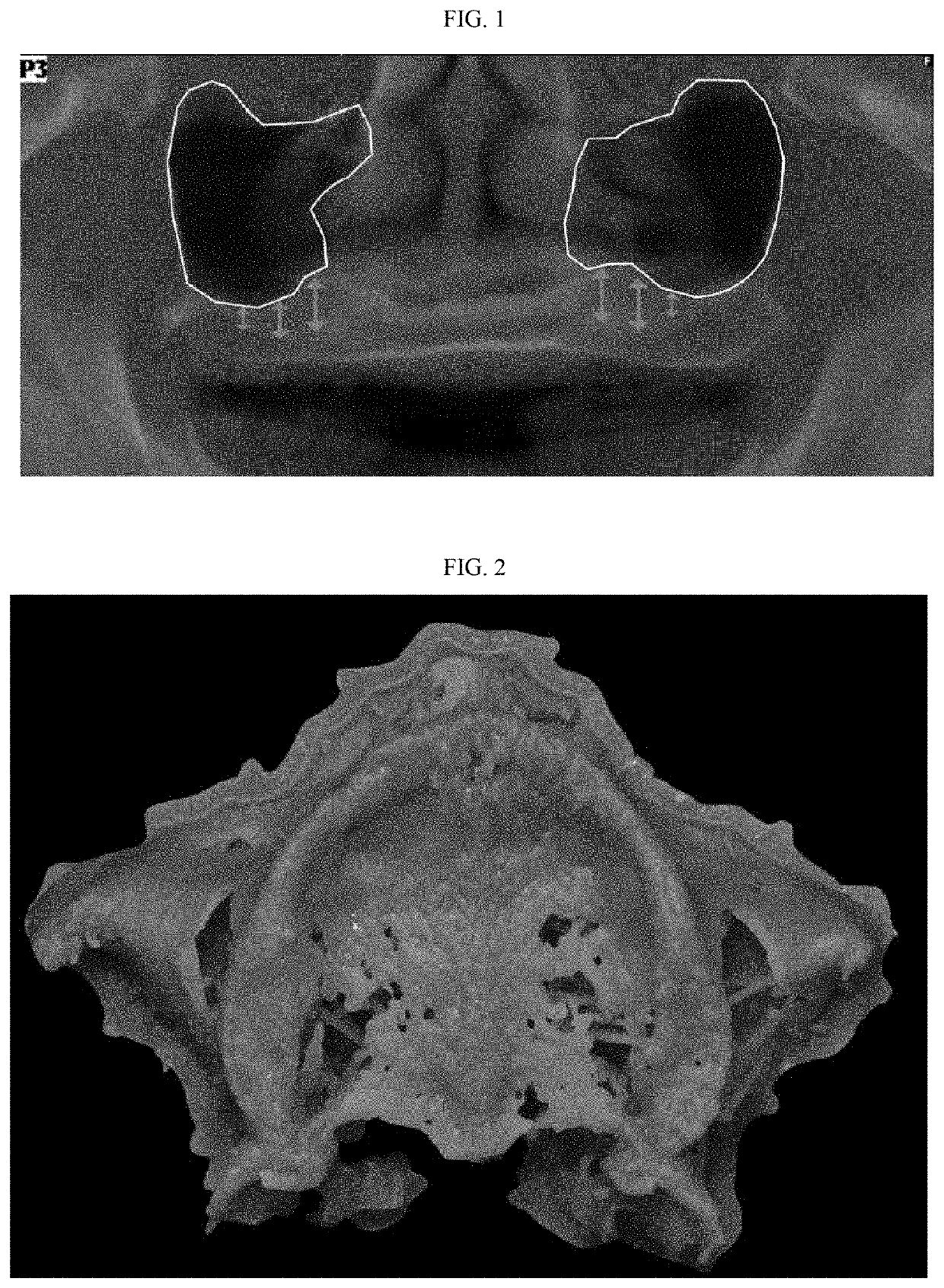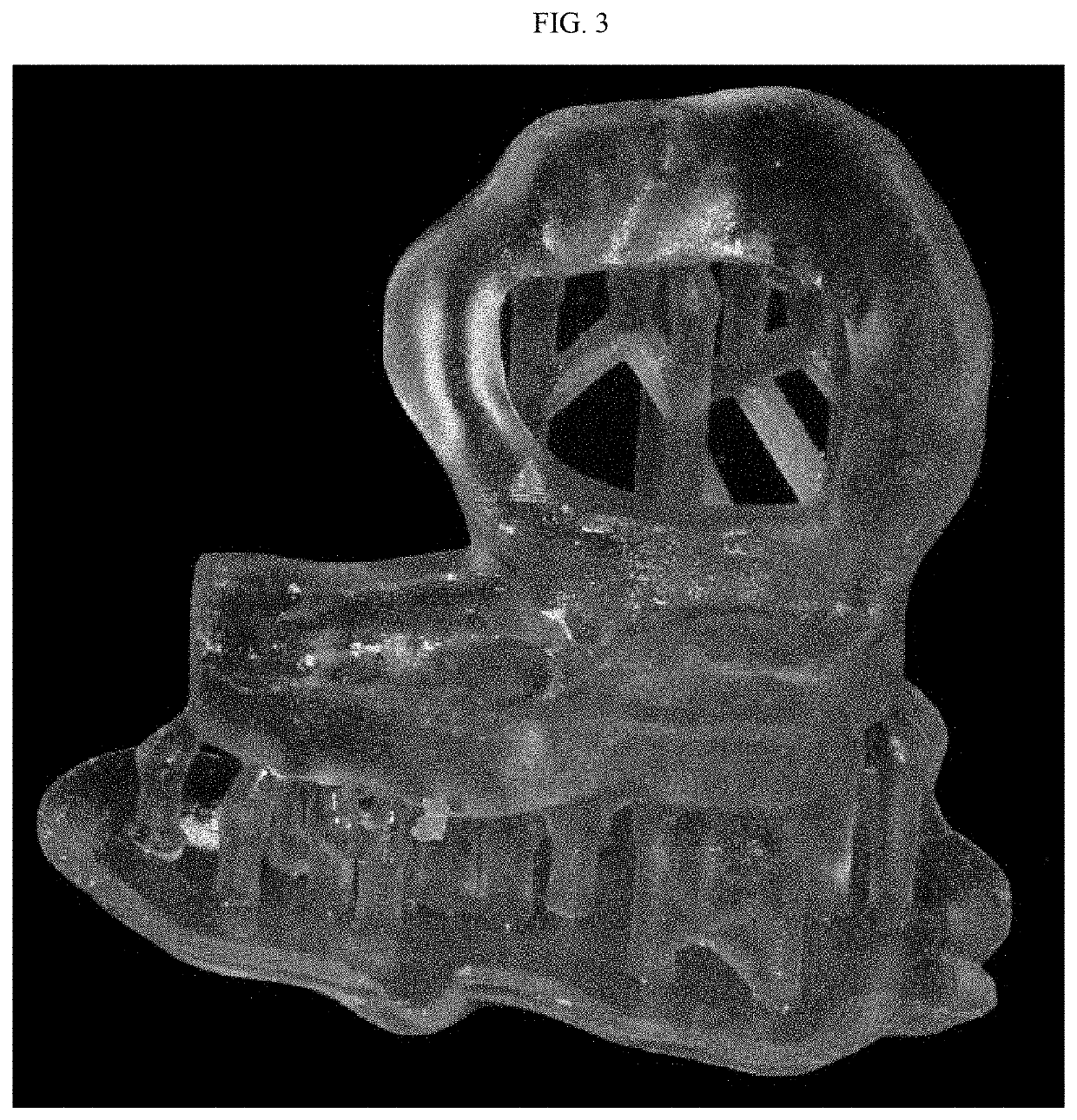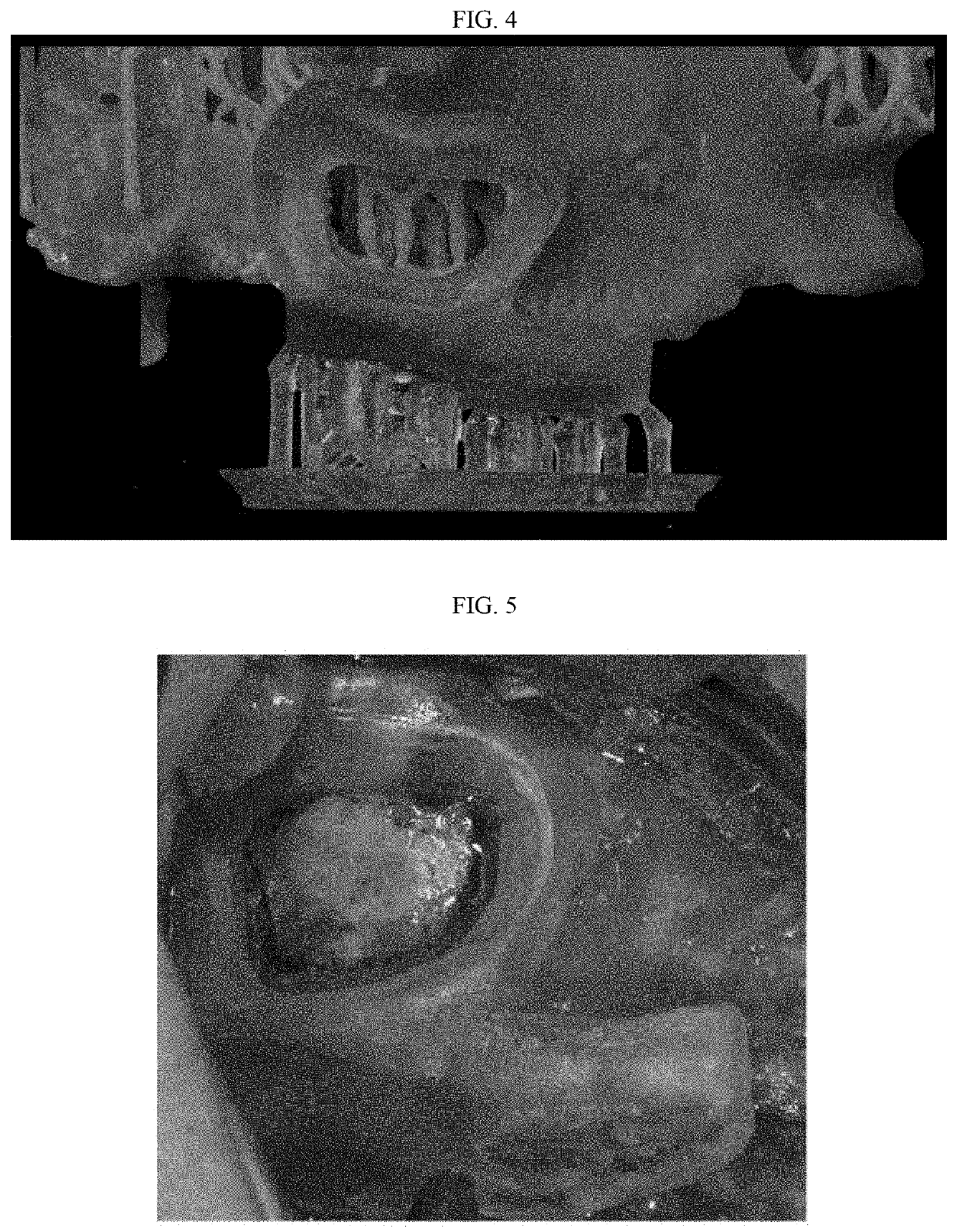Three-dimensional printed bone supported sinus guide for edentulous maxillary arch
a three-dimensional printing and bone supported technology, applied in the field of surgical guides, can solve the problems of inability of the operator to precisely locate the floor of the sinus, lack of bony support around the portion of the implant, and frustrating the purpose of stably anchoring dental implants, etc., and achieve the effect of accurately preparing an osteotomy
- Summary
- Abstract
- Description
- Claims
- Application Information
AI Technical Summary
Benefits of technology
Problems solved by technology
Method used
Image
Examples
example
[0084]A CBCT scan of a patient's maxilla and jaw is taken using a VGi Evo instrument (https: / / _www.cefladental.com / our-brands / newtom / , last accessed Mar. 5, 2019, incorporated by reference) to diagnose and plan treatment of an edentulous patient. The CBCT cross section is used to evaluate and plan sinus grafting to support a dental implant. Data from the scan is provided in a DICOM file which can be used to provide a 3D model of the maxillary bone.
[0085]DICOM reconstruction software (InVesalius 3.0) is used to transform that DICOM data set from the CBCT scan into a 3D bone model. The bone model is exported as an STL file.
[0086]The STL file depicting maxillary bone is superimposed on the CBCT data using implant-planning software (BlueSky Plan; https: / / _blueskybio.com / pages / blue-sky-plan-guided-surgery-software, last accessed Mar. 5, 2019, incorporated by reference). Implant position is selected and a gum-bone supported surgical guide is designed which includes the implant position an...
PUM
 Login to View More
Login to View More Abstract
Description
Claims
Application Information
 Login to View More
Login to View More - R&D
- Intellectual Property
- Life Sciences
- Materials
- Tech Scout
- Unparalleled Data Quality
- Higher Quality Content
- 60% Fewer Hallucinations
Browse by: Latest US Patents, China's latest patents, Technical Efficacy Thesaurus, Application Domain, Technology Topic, Popular Technical Reports.
© 2025 PatSnap. All rights reserved.Legal|Privacy policy|Modern Slavery Act Transparency Statement|Sitemap|About US| Contact US: help@patsnap.com



